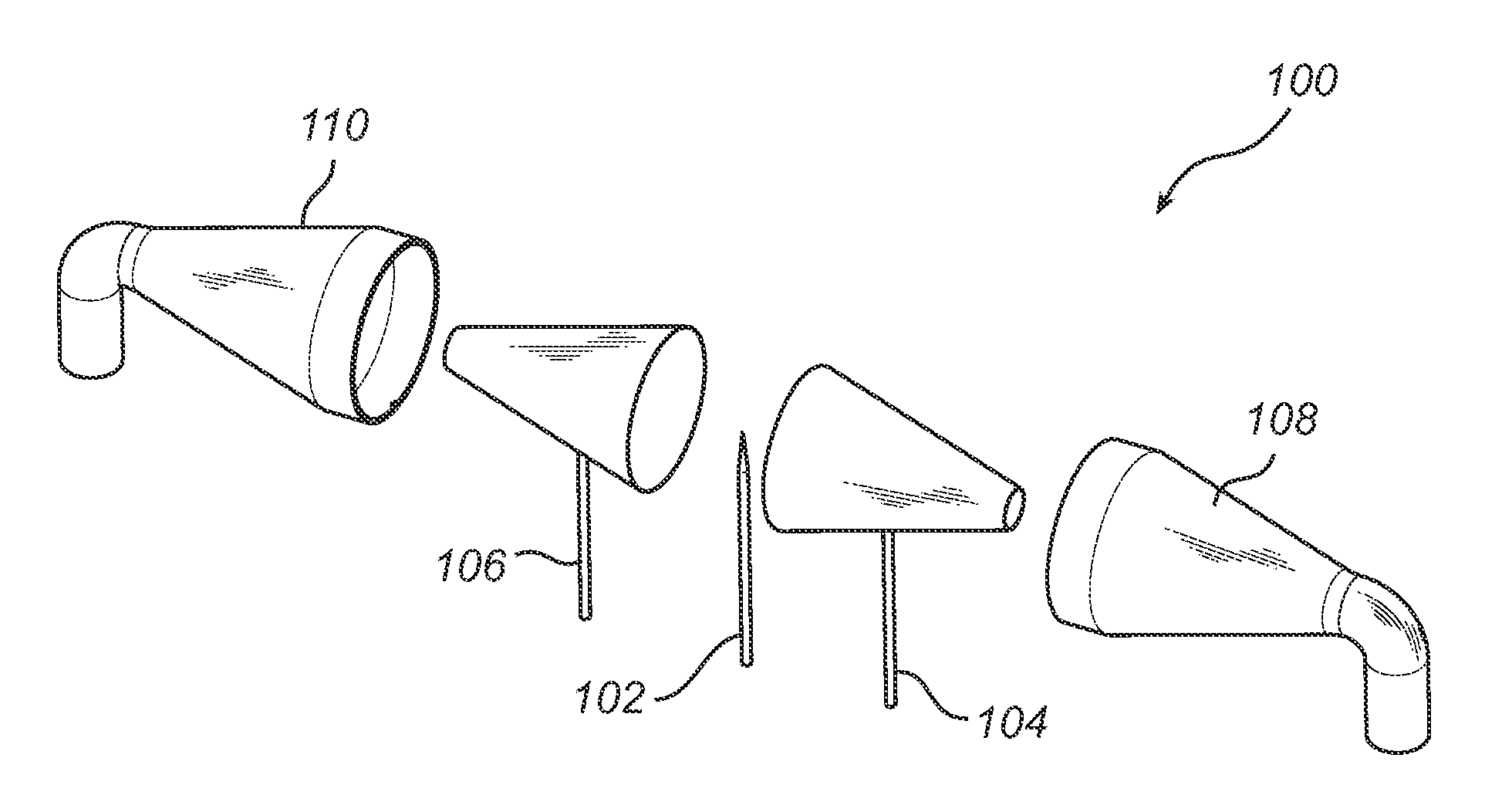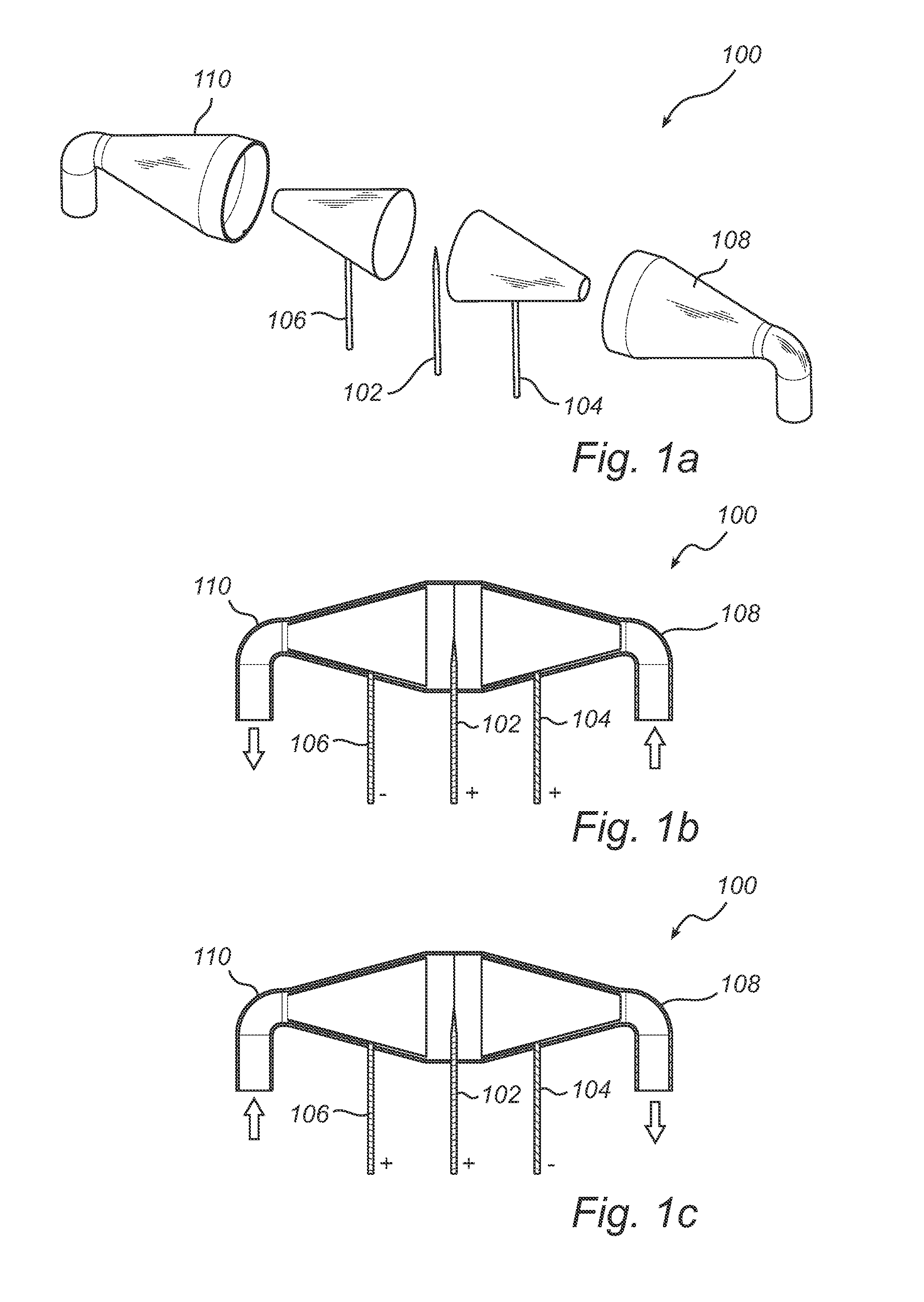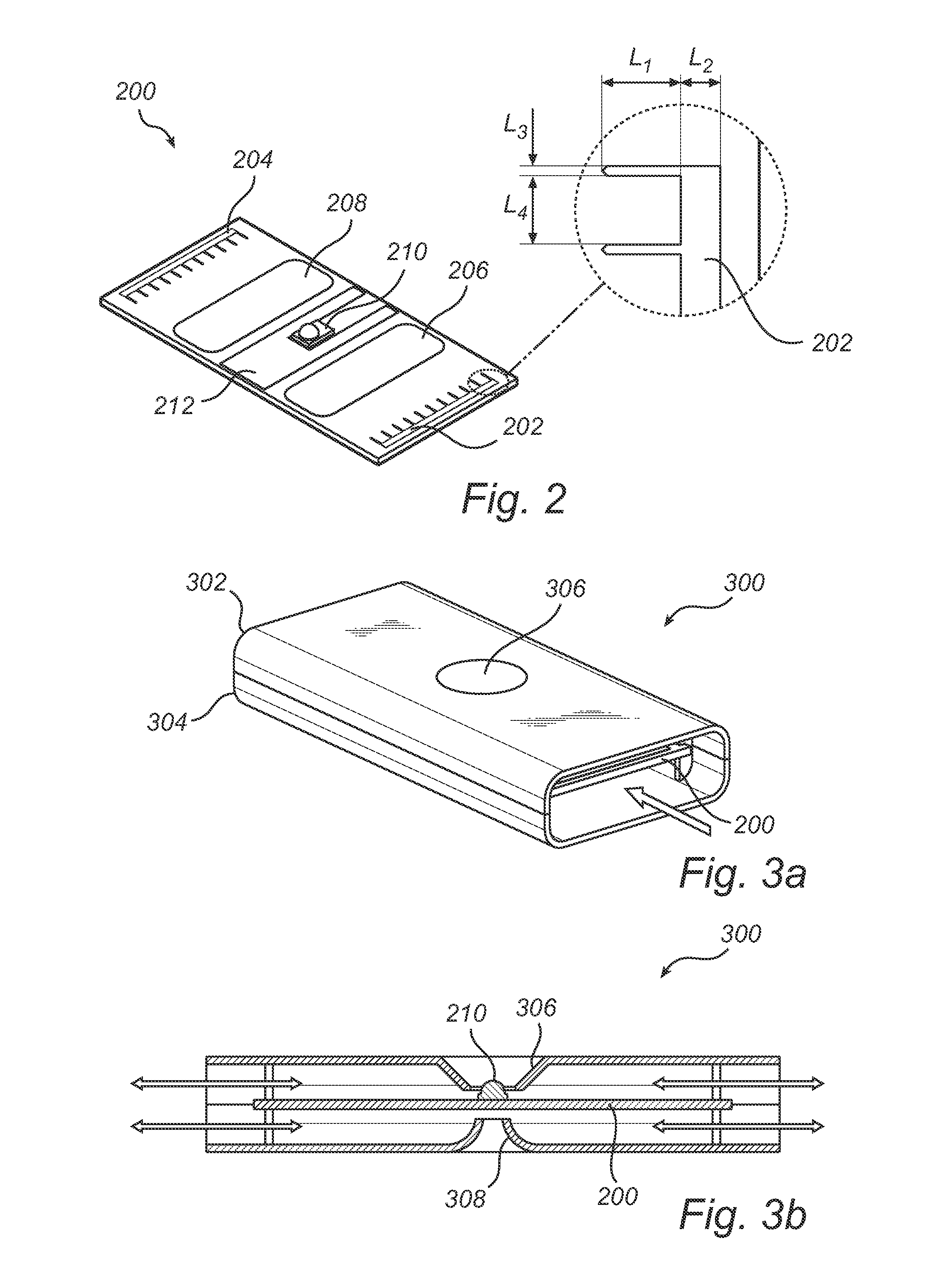Cooling arrangement for a luminaire
a cooling arrangement and luminaire technology, applied in the direction of spark plugs, corona discharge, lighting and heating apparatus, etc., can solve the problems of high heat load of high-power leds, fan consumption of extra power, and bulky type of cooling arrangement, so as to reduce the need for heat sinks, and similar or better performance
- Summary
- Abstract
- Description
- Claims
- Application Information
AI Technical Summary
Benefits of technology
Problems solved by technology
Method used
Image
Examples
Embodiment Construction
[0023]The present invention will now be described more fully hereinafter with reference to the accompanying drawings, in which currently preferred embodiments of the invention are shown. This invention may, however, be embodied in many different forms and should not be construed as limited to the embodiments set forth herein; rather, these embodiments are provided for thoroughness and completeness, and fully convey the scope of the invention to the skilled addressee. Like reference characters refer to like elements throughout.
[0024]Referring now to the drawings and to FIG. 1 in particular, there is depicted a schematic illustration of a cooling arrangement according to a currently preferred embodiment of the present invention. FIG. 1a shows the separate part of the cooling arrangement 100, comprising a source electrode in the form of a corona electrode 102, a first target electrode 104 and a second target electrode 106. Additionally, the cooling arrangement 100 comprises a first and...
PUM
 Login to View More
Login to View More Abstract
Description
Claims
Application Information
 Login to View More
Login to View More - R&D
- Intellectual Property
- Life Sciences
- Materials
- Tech Scout
- Unparalleled Data Quality
- Higher Quality Content
- 60% Fewer Hallucinations
Browse by: Latest US Patents, China's latest patents, Technical Efficacy Thesaurus, Application Domain, Technology Topic, Popular Technical Reports.
© 2025 PatSnap. All rights reserved.Legal|Privacy policy|Modern Slavery Act Transparency Statement|Sitemap|About US| Contact US: help@patsnap.com



